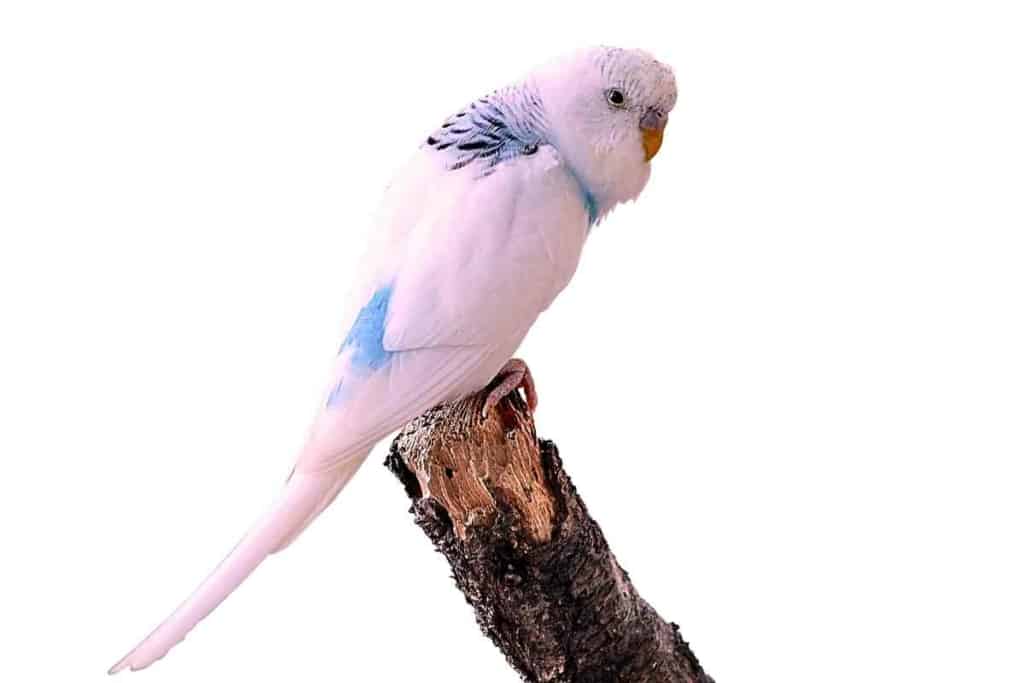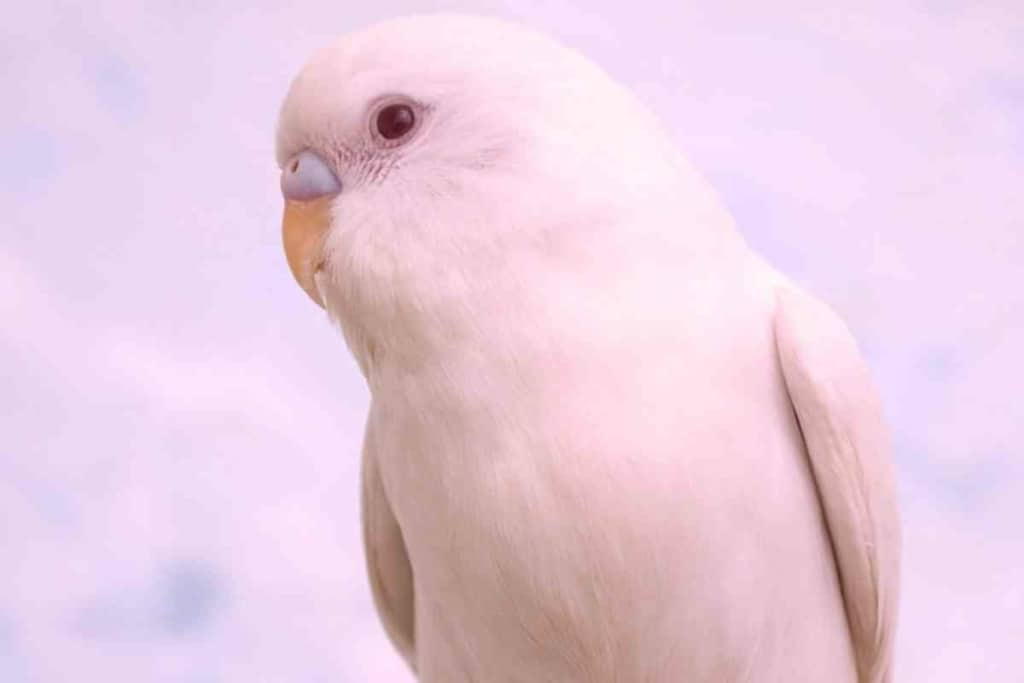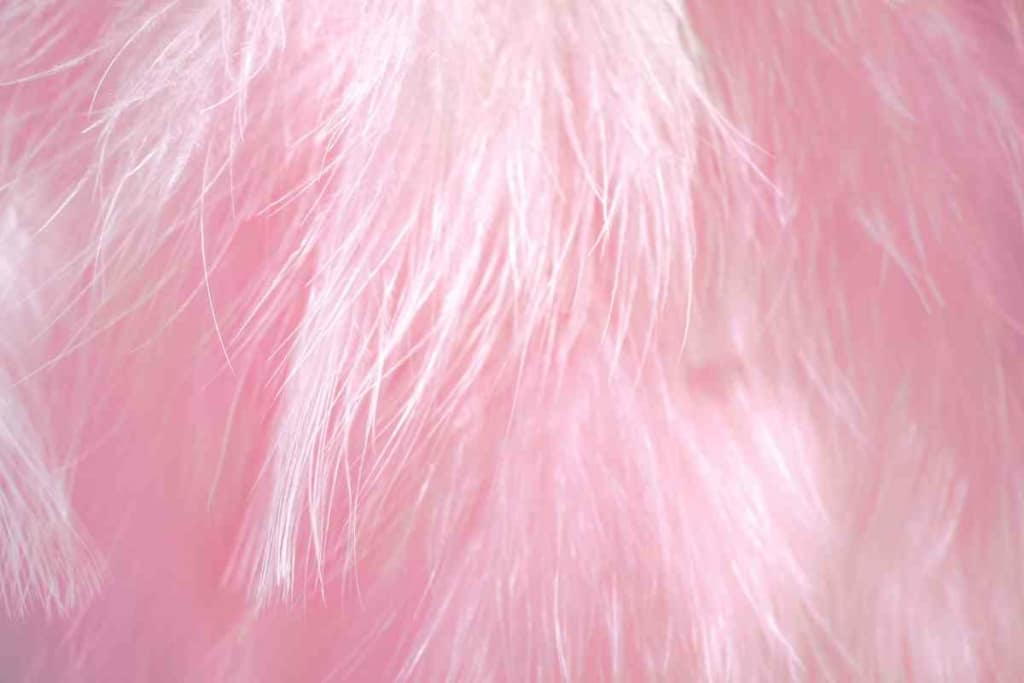8 Reasons Why Your Budgie Is Turning Pink (And When To Panic)
Owning and caring for a budgie is no easy task; after all, they are one of the rarest breeds of birds to exist today. Many owners wonder why is my budgie turning pink.

Why Is My Budgie Turning Pink?
Although intimidating, this change is just a natural process of age. All budgies are born white; however, as they mature and reach sexual maturity, their feathers start to change color, often becoming pink.
But this changing process isn’t consistent for all budgies and varies depending on multiple factors, including genetics, environmental factors, living conditions and even the diet of the bird.
To help you get deeper into this phenomenon, here we will go over the process that causes budgies to change color, the reasons behind the change, the age at which an owner can expect this transformation, and the multiple shades a budgie can morph into.
Do Budgies Change Color?
Budgies, also known as parakeets, are small, vibrant birds that are native to Australia. They are the only species in the genus Melopsittacus and are closely related to other parakeet species like the rosella, grass parakeet, and Budgerigar.
Most budgies are entirely white at birth, but as they mature, their feathers start to change color and develop the bold hues that they are known for. The pigments in their feathers determine the final color of the bird.
The three primary pigment colors are black, yellow, and blue.
These colors combine to produce the various shades of green, purple, pink, and other hues that budgies can have.
The amount of each pigment present will also affect the saturation of the final color. For example, a budgie with more yellow pigment will appear brighter than one with less yellow pigment.
When Do Budgies Color?
The process of a budgie turning color usually begins around 4 to 6 weeks of age. This is when the chicks start to develop their first set of feathers, known as pin feathers.
These pinfeathers are usually the same color as the budgie’s skin, which is yellow. As the chick grows older, the pinfeathers will fall out and be replaced by adult feathers.
The new feathers will be a different color than the pin feathers. The final color of the budgie will not be fully developed until they are around 6 months old.
However, it is not unusual for budgies to continue changing color until they are 1 year old or even older.
The speed at which budgies change color depends on multiple factors, like hereditary factors, diet, and exposure to sunlight.
How Do Budgies Change Their Color?

The process of a budgie changing color is fascinating and complex. It all starts with a protein known as melanin.
Budgie color changes are mostly due to the interaction of two pigments: melanin and psittacofulvine.
Melanin is a black pigment that is produced by cells called melanocytes, while psittacofulvine is a yellow pigment that is found in the budgie’s feathers. The amount of each pigment present in the feathers determines the bird’s overall coloration.
Melanin is produced by cells called melanocytes, which are found in the budgie’s skin and feathers. The melanocytes produce two kinds of melanin: eumelanin and pheomelanin.
Eumelanin is responsible for black and brown colors, while pheomelanin produces red, pink, and yellow hues.
The ratio of eumelanin to pheomelanin determines the final color of the budgie’s feathers.
For example, a budgie with more eumelanin will appear black, while one with more pheomelanin will be yellow. The amount of melanin produced by the melanocytes is determined by the bird’s genes.
The process of color change begins when the budgie molts or sheds its old feathers and grows new ones.
As part of this process, the melanocytes begin to produce more melanin, which is deposited in the new feathers.
This increase in melanin causes the feather to darken in color. Thepsittacofulvin, on the other hand, is gradually lost from the feathers during the molting process. As a result, budgies that molt frequently will generally become lighter in color over time.
What Causes Budgies to Change Color?
There are a few things that can trigger a budgie to molt more often than normal and thus change color more rapidly. Understanding these reasons is key to keeping your budgie healthy and preventing unwanted color changes.
Breeding Season:
One of the most common reasons for budgies to change color is the breeding season, when the bird’s hormones are stimulated, and it molts faster in order to grow new feathers in preparation of your budgie beginning to nest.
During this time, male budgies will molt in order to attract mates.
As they molt, they will develop brighter and more colorful feathers. The extra melanin in their feathers makes them appear blacker, while the lost psittacofulvine makes them look yellower.
This color change is most pronounced in yellow-colored budgies, but all budgie colors can be affected.
Diet:
Another factor that can influence a budgie’s color is diet. A lack of certain vitamins and minerals can cause a budgie to often lose color.
For example, a deficiency in vitamin A can cause a budgie to become paler in color.
Conversely, an excess of vitamin A can cause the feathers to become darker. This is why it’s so important to feed your budgie a well-balanced diet and make sure they are getting all the nutrients they need.
Exposure to Light:

Sunlight is another factor that can influence a budgie’s color. Budgies that are exposed to more sunlight will generally molt more frequently and lose more psittacofulvine from their feathers.
As a result, they will become lighter in color over time.
On the other hand, budgies that are kept in dim lighting will tend to molt less often and retain more psittacofulvine in their feathers. This can cause them to become darker in color.
Age:
Age is another factor that can influence a budgie’s color. As budgies get older, they will generally molt less frequently and lose more psittacofulvine from their feathers.
This makes them appear lighter in color.
Conversely, young budgies are molted more frequently and have brighter feathers due to the higher levels of psittacofulvine in their plumage.
Deficiencies:
In some cases, a budgie may undergo a complete color change due to a disease or nutritional deficiency. For example, if a budgie does not have enough vitamin A in its diet, it may develop white patches on its feathers. This is because vitamin A is necessary for the proper development of melanin.
Without enough vitamin A, the melanocytes are unable to produce enough pigment to color the feathers correctly.
A deficiency in vitamin B can also cause a budgie’s plumage to become lighter in color. This is because vitamin B helps the body produce melanin, which is responsible for the dark color of the feathers.
Stress:
Finally, stress is another factor that can cause a budgie to molt more frequently and lose color. When a budgie is stressed, it will produce more of the hormone cortisol.
This hormone helps the body cope with stress but also suppresses the immune system.
As a result, the budgie may molt more frequently and lose feathers more easily. This can cause it to become lighter in color.
In some cases, a budgie may even lose all its feathers if it is under too much stress. This is known as molting or flight feather loss.
If this happens, take the budgie to see a vet as soon as possible so that they can determine the cause of the stress and treat it accordingly.
Selective Feather Plucking:
In some cases, a budgie may pluck out its own feathers. This is usually due to boredom, stress, or a nutritional deficiency.
If a budgie is deficient in vitamin A, it may pluck out its feathers in order to get more of the vitamin.
If a budgie is bored, it may pluck out its feathers in order to have something to do.
And if a budgie is stressed, it may pluck out its feathers as a way of coping with the stress.
If you notice that your budgie is starting to pluck out its feathers, it’s important to take it to see a vet so that they can determine the cause and treat it accordingly.
Color mutations:
In some cases, a budgie’s color may change due to a mutation. For example, the budgie may inherit a gene that causes it to produce more melanin.
This can make the budgie’s plumage appear darker than usual. Alternatively, the budgie may inherit a gene that makes it unable to produce melanin at all. This can make the plumage appear white or pale.
There are many other possible mutations that can cause a budgie’s plumage to change color. Some of these mutations are harmless and do not affect the health of the bird.
However, others may be associated with health problems such as cancer or heart disease.
Popular Budgie Articles
- The Ultimate Guide To Keeping Budgies And Chickens Together
- 8 Reasons Why Your Budgie Is Turning Pink (And When To Panic)
- 7 Reasons Why Your Budgie Suddenly Died
- Budgie Nesting Material: What To Use, When, & Why
- 8 Reasons Why Your Budgie Keeps Bobbing Their Heads
- 10 Birds You Can (Probably) Keep With Your Budgie
- Can A Budgie Break Its Tail? 8 Common Causes
- Can You Move Budgie Eggs? Is It Safe?
- Petco Budgies: Are These Colorful Birds Available at Your Local Store?
- Do Budgies Need A Mineral Block
Key Takeaways
- There are many reasons why a budgie’s plumage may change color including diet, seasonal changes, age and exposure to light.
- Most changes are normal and nothing to worry about, while others may be indicative of a health problem and stress.
- If you notice your budgie’s plumage changing color, it is essential to schedule an appointment with a vet so that they can determine the cause and provide appropriate treatment.
